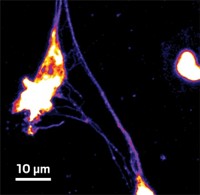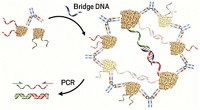Advertisement
Grab your lab coat. Let's get started
Welcome!
Welcome!
Create an account below to get 6 C&EN articles per month, receive newsletters and more - all free.
It seems this is your first time logging in online. Please enter the following information to continue.
As an ACS member you automatically get access to this site. All we need is few more details to create your reading experience.
Not you? Sign in with a different account.
Not you? Sign in with a different account.
ERROR 1
ERROR 1
ERROR 2
ERROR 2
ERROR 2
ERROR 2
ERROR 2
Password and Confirm password must match.
If you have an ACS member number, please enter it here so we can link this account to your membership. (optional)
ERROR 2
ACS values your privacy. By submitting your information, you are gaining access to C&EN and subscribing to our weekly newsletter. We use the information you provide to make your reading experience better, and we will never sell your data to third party members.
Analytical Chemistry
Synthetic Biomarkers Monitor Disease
Peptide-nanoparticle conjugates release reporter ions that can be detected in urine
by Celia Henry Arnaud
December 24, 2012
| A version of this story appeared in
Volume 90, Issue 52
If you can’t find natural biomarkers to monitor a disease, the next best option may be to just make them yourself. A team of researchers led by Sangeeta N. Bhatia of MIT has done just that. They made synthetic biomarkers by attaching mass-encoded peptides to polyethylene glycol-coated iron oxide nanoparticles (Nat. Biotechnol., DOI: 10.1038/nbt.2464). The peptides, which are substrates for disease-associated proteases, are tagged with isobaric reporters, which have the same overall mass but produce distinctive fragment ions during mass spectrometry. The proteases cleave the peptides and release the reporters, which can be collected in urine. The isobaric tags make it easy to collect the reporters at a single mass and then differentiate them by their fragmentation spectra. The researchers used the reporters in mouse models for monitoring liver fibrosis, a wound-healing response to chronic liver injury, and for early detection of colorectal cancer. The strategy could be adapted for other diseases by using other scaffolds, targeting other enzyme families, and using other reporters.





Join the conversation
Contact the reporter
Submit a Letter to the Editor for publication
Engage with us on Twitter